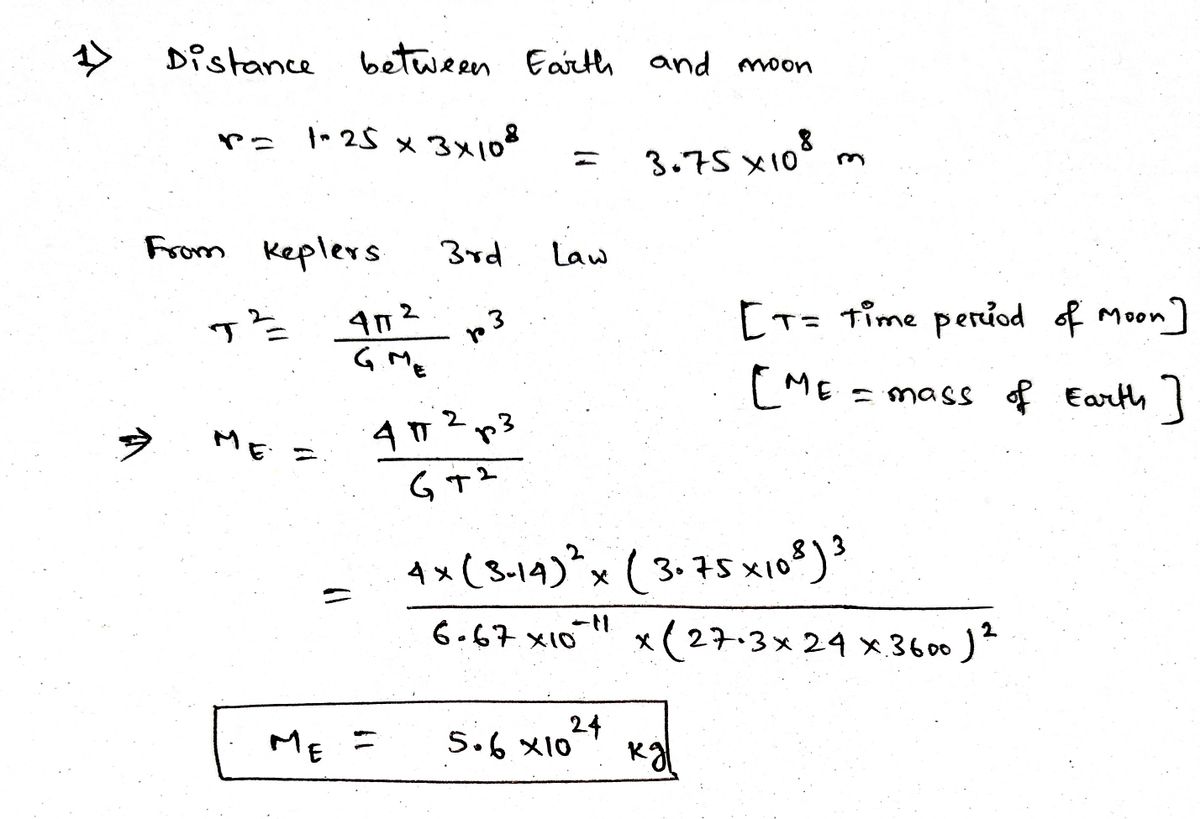Estimate the mass of Earth Part 2) The force of Earth's gravitational pull on the moon is about 2.0 x 10^20 N. Estimate the mass of the moon. Part 3) The moon has a radius of 1.7 x 10^6 m. On the surface of the moon, what is the acceleration due to the moon's gravity? Part 4) How many g's is your answer to part c? Or what percentage of Earth's gravity would you experience on the moon? Part 5) If you stood on the moon and jumped straight up with a velocity of 1.0 m/s, how long would it be before
Please refer to the picture for the formulas and constants that have to be used and shown in this problem.
It takes light about 1.25 seconds to reach the moon from Earth. The moon orbits Earth about once every 27.3 days.
Part 1) Estimate the mass of Earth
Part 2) The force of Earth's gravitational pull on the moon is about 2.0 x 10^20 N. Estimate the mass of the moon.
Part 3) The moon has a radius of 1.7 x 10^6 m. On the surface of the moon, what is the acceleration due to the moon's gravity?
Part 4) How many g's is your answer to part c? Or what percentage of Earth's gravity would you experience on the moon?
Part 5) If you stood on the moon and jumped straight up with a velocity of 1.0 m/s, how long would it be before you landed back on the moon's surface?
Please answer all parts.


Step by step
Solved in 2 steps with 2 images









